The Real Deal on Farmhouse Dining Rooms (It’s Not Just Shiplap)
I’ve spent a good chunk of my life with sawdust in my hair, restoring old homes and working with wood. And honestly, one of the top questions I get is about the “farmhouse” style. People see these picture-perfect rooms online and think it’s all about buying a sign that says “gather” or finding a specific type of chair. But a true farmhouse dining room is so much more than a checklist of trends.
In this article
It’s a space built on a foundation of honesty and utility. It’s about materials that are meant to last and a design that actually serves the family using it. In the authentic old farmhouses I’ve had my hands on, nothing was just for show. Every beam, every floorboard, every piece of furniture had a job. That’s the spirit we’re aiming for here.
So, let’s forget about creating a perfect showroom. We’re going to talk about building a warm, durable, and genuine heart for your home—a dining room that feels like it’s always been there. We’ll get into the bones of the room, the materials, and the techniques that make all the difference.

First Things First: The Foundation of the Room
Before you even dream about that big, beautiful table, you have to get the room itself right. Think of the walls, floors, and light as the container for everything else. Get these elements right, and the room will feel honest from the start. Get them wrong, and no amount of fancy furniture will save it.
Let’s Talk Walls (And Yes, More Than Shiplap)
Okay, let’s get it out of the way. Shiplap is everywhere. But long before it was a design fad, it served a real purpose. In old homes without modern insulation, builders used it for its tight fit. Each board has a little groove, called a rabbet, that overlaps the next one, creating a seal against the wind. It was a simple, smart solution using whatever wood was handy, usually pine.
If you’re going to install shiplap, do it with a nod to its roots. Use real wood planks, not those flimsy MDF sheets. I’d go for 3/4-inch thick boards. And here’s a pro tip my mentor taught me: don’t jam the boards together. Wood needs to expand and contract with humidity. Use a nickel as a spacer between boards as you install them. It creates a perfect, consistent shadow line and prevents buckling later on. Be prepared, though—real pine shiplap can run you anywhere from $4 to $8 per square foot, while the thin paneling is closer to $2. You really do get what you pay for in terms of authenticity.
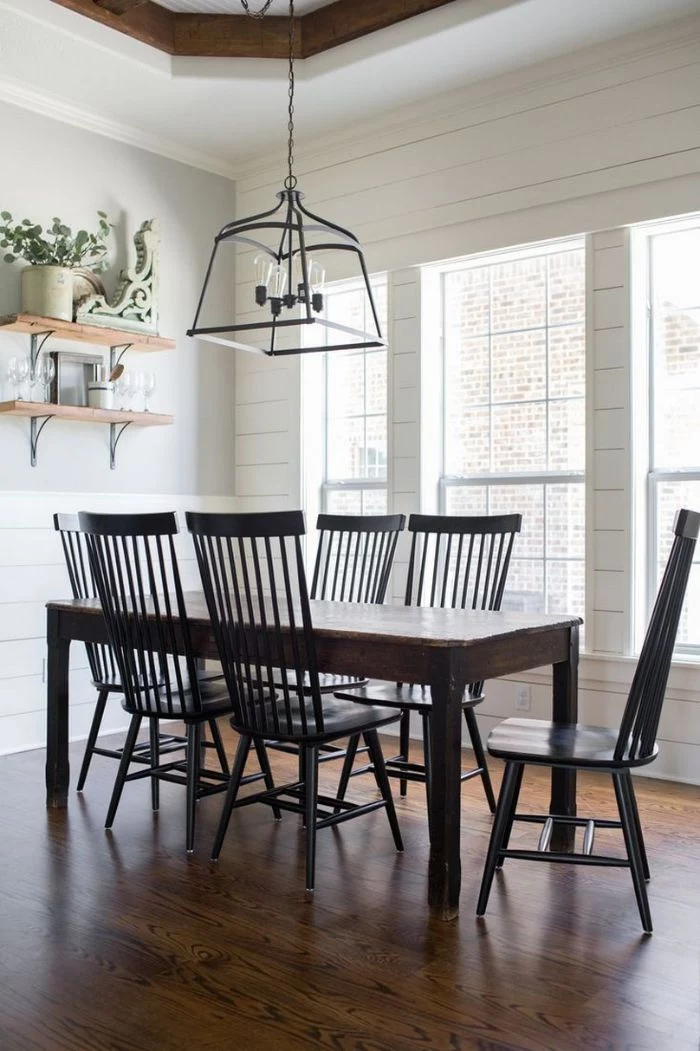
But shiplap isn’t the only game in town! Many old farmhouses had simple plaster walls. A hand-troweled plaster finish has this subtle, organic texture that catches the light beautifully. Another great choice is beadboard, which was often used in kitchens and pantries. Its vertical lines can make a room feel a bit taller.
For paint, consider giving traditional milk paint a try. It’s a classic finish that soaks into raw wood instead of sitting on top like a plastic film. This gives it a soft, chalky look that modern paints just can’t replicate. It will chip and wear over time, which, in my opinion, just adds character. A heads-up: it comes as a powder you mix with water, so use it quickly once it’s prepared and make sure your room is well-ventilated.
Floors with a Story to Tell
The floors in old farmhouses were almost always wide-plank wood. The reason was simple: the trees were huge, old-growth timber that produced massive boards. Pine was common and easy to work with, while oak was used for its incredible durability. These floors were built to handle generations of muddy boots and daily life.
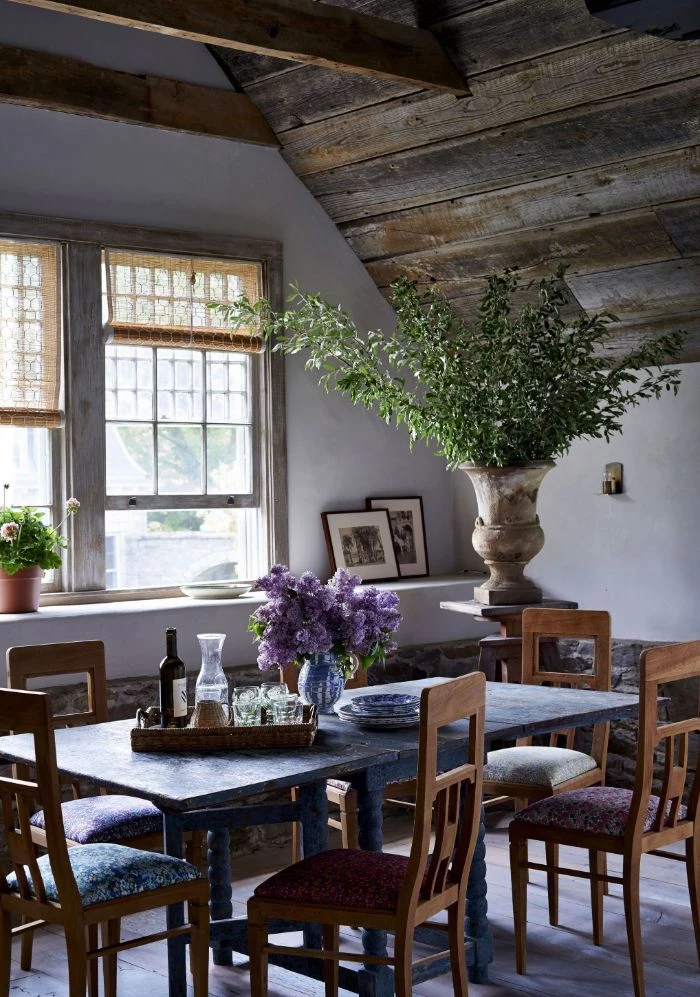
If you’re putting in a new floor, sourcing reclaimed wood is an amazing option. Look for local “architectural salvage yards” to avoid massive shipping fees. This wood can range from $5 to over $15 per square foot depending on the type and condition. When you’re inspecting reclaimed boards, look for more than just a rustic vibe. Check for insect damage (little holes or powdery dust) and make sure they aren’t severely warped. Oh, and here’s a non-negotiable step: get a metal detector wand and scan every single board for old nails. Hitting a hidden nail with a saw blade is a quick way to ruin your day and a very expensive tool.
When it comes to finishing the floor, you’ve got two main paths. An oil-based finish, like tung oil, soaks into the wood and gives it a natural, low-sheen look. The big win here is repairability—you can lightly sand a scratch and just re-apply a bit of oil. A polyurethane finish, on the other hand, is like a plastic shield on top. It’s super durable against spills, but if you get a deep scratch, you’re often looking at refinishing the whole floor.
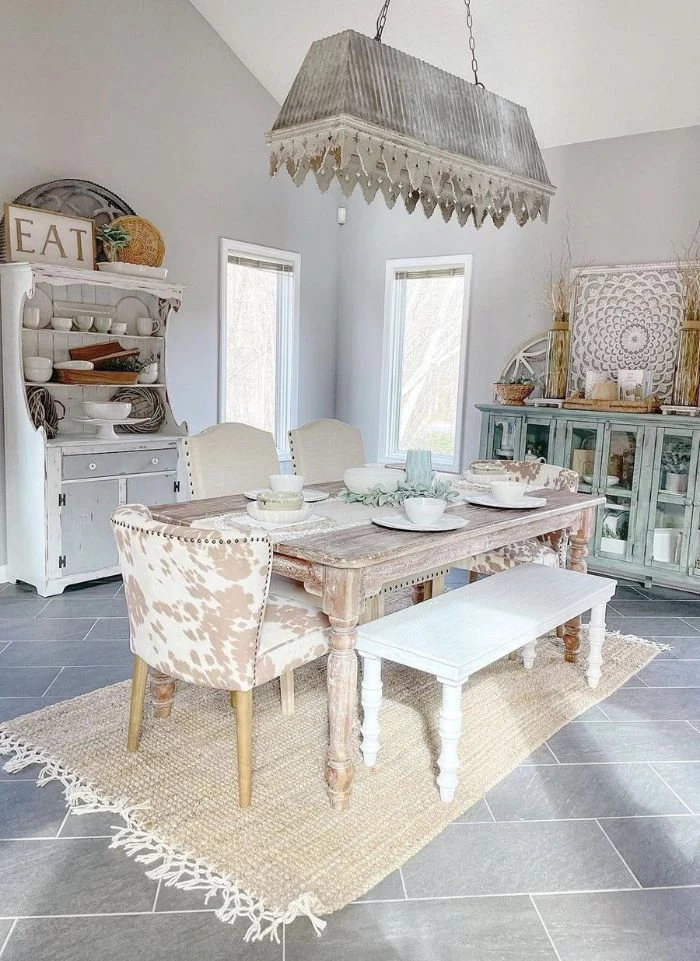
Let There Be Light
Natural light was a necessity, not a design choice. The windows themselves were a key feature. True divided-lite windows, the kind with individual panes of glass set in a wooden grid, have a depth and character that modern snap-in grilles just can’t match. For window treatments, keep it simple. Heavy drapes would have blocked precious light. Simple linen or cotton panels on a plain iron rod are all you need to soften the frame without hiding it.
The Heart of the Room: The Table and Chairs
This is it—the centerpiece. The dining table is where everyone comes together, so it needs to be sturdy, functional, and inviting. The chairs around it should be just as honest in their construction.
Finding or Building the Perfect Table
Classic farmhouse tables are all about strong, simple construction. Trestle tables are a fantastic example, with a long top supported by two sturdy legs and a connecting stretcher. They’re rock-solid and give you tons of legroom. Another timeless style is a table with four thick, turned legs shaped on a lathe.

The secret to their longevity is the joinery. A well-built table uses mortise and tenon joints, where a wooden tongue fits snugly into a hole and is secured with a peg or glue. It’s worlds stronger than the screws and brackets you find in most mass-produced furniture today. When you’re shopping for a secondhand table, give the legs a good wobble. If they’re loose, the joints might be failing.
Want that cool, weathered gray look without waiting 50 years? Here’s a little recipe I swear by for aging raw wood:
- Tear up one pad of #0000 super-fine steel wool and drop it into a glass jar.
- Cover it with plain white vinegar and let it sit for a few days with the lid loose until the steel wool dissolves.
- Brush this concoction onto a piece of raw wood that has tannins, like pine or oak. Always test it on a scrap piece first! The chemical reaction will turn the wood a beautiful, silvery gray that looks way more authentic than any stain.
But let’s be honest about lifestyle. A raw, rustic tabletop can be a nightmare to clean, especially with kids. I often recommend a compromise: a sturdy, rustic base with a smooth, well-sealed top. You get the look without the daily frustration.
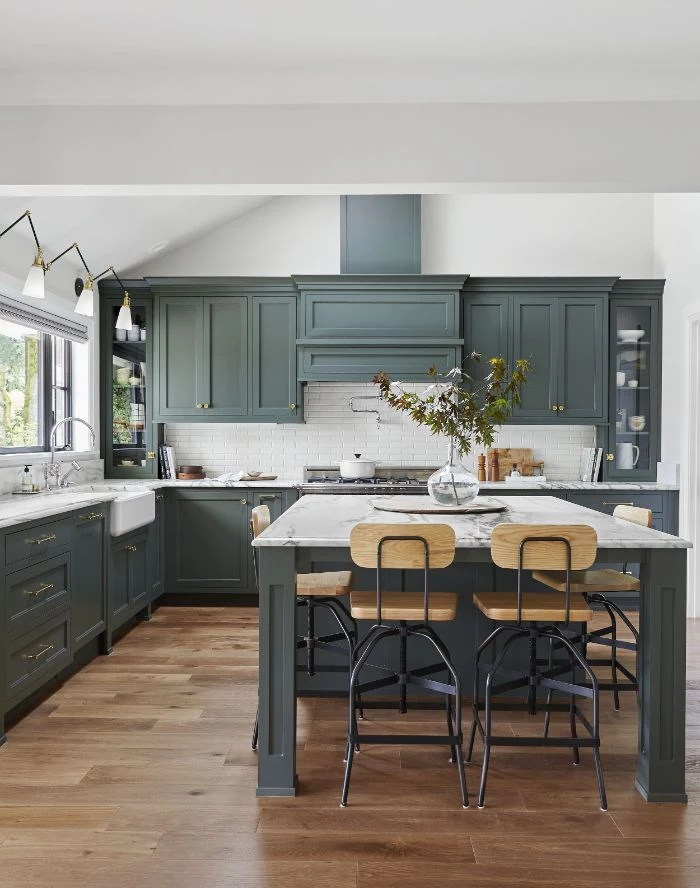
The Beauty of Mismatched Chairs
The whole mismatched chair trend actually comes from a place of reality. In the past, families acquired chairs as they could—one passed down, another bought at a local sale. The goal was simply having enough seats. Classic styles to look for are Windsor chairs (with a solid seat and spindles) and ladder-backs (with horizontal slats). They’re both timeless and surprisingly comfortable.
If you’re just starting and want a quick win, try hunting for ladder-back chairs on Facebook Marketplace or at flea markets. You can often find them for $40 to $80 a piece. To create a cohesive mismatched set, either paint all the different styles in the same color (a classic black or off-white always works) or keep the natural wood but try to stick to a similar tone family (like various shades of oak and maple).
The Supporting Cast: Storage and Lighting
Once the main pieces are in, you need functional storage and the right lighting to complete the room.
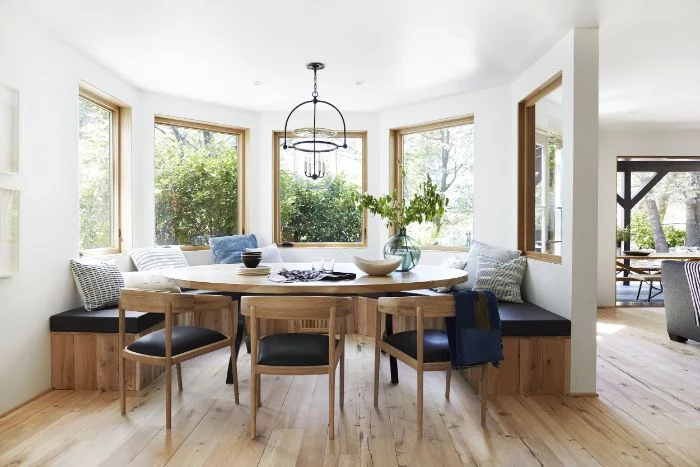
Storage That Works
A farmhouse dining room often stored everything from fine china to jars of preserves. This led to pieces like a hutch for displaying nice plates, a pie safe with perforated tin doors for ventilation, or a simple jelly cupboard.
Quick but important safety note: If you bring a big, heavy piece like a hutch into your home, you MUST secure it to the wall, especially if you have kids. Use a stud finder and anchor it with L-brackets directly into the wall studs. Drywall alone will not hold it.
Lighting to Create a Mood
The right light fixture is about more than just looks. For a warm, inviting glow in a dining room, look for bulbs around 2700K. Anything higher will start to feel sterile, like an office.
I love finding old chandeliers at salvage yards, but their wiring is almost always a hazard. Finding a cool fixture for $50 is a thrill, but you absolutely have to budget another $100 to $200 to have a licensed electrician inspect and safely rewire it. Seriously, this is not a DIY job—it’s a major fire risk.
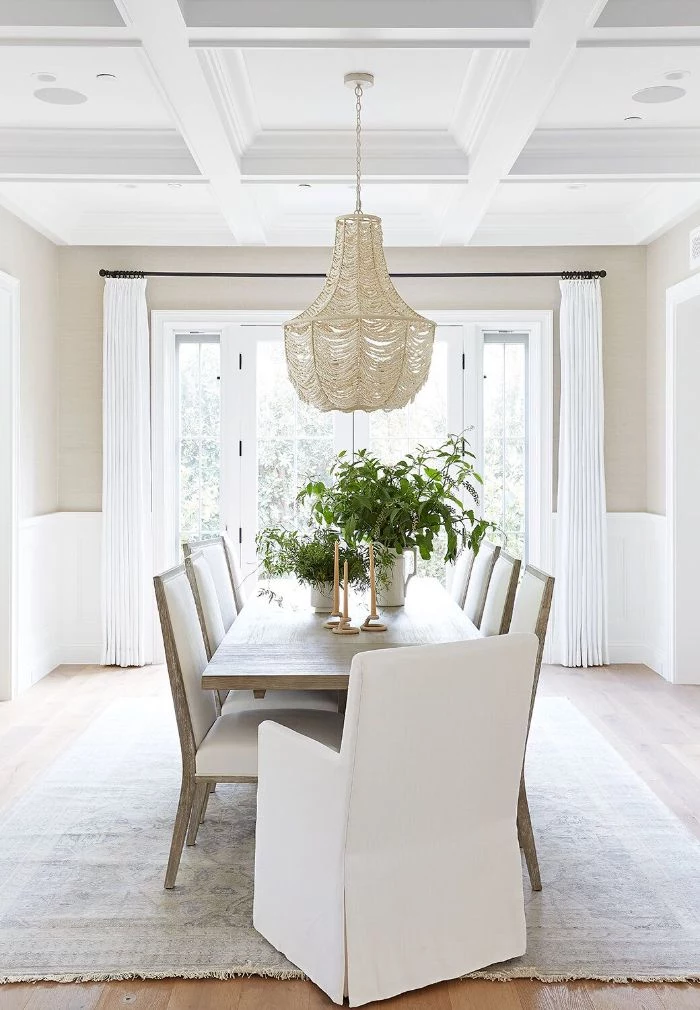
And don’t forget scale! A good rule of thumb is to add the room’s length and width in feet. That number, in inches, is a good starting point for your chandelier’s diameter. So, a 12-foot by 14-foot room (12 + 14 = 26) would look great with a chandelier around 26 inches wide.
Putting Your Own Spin On It
The farmhouse style isn’t stuck in the past. It’s incredibly adaptable and has different flavors depending on where you are.
For instance, the popular American style is often based on a sturdy, Midwestern aesthetic with unpretentious oak furniture. But the Southern farmhouse style feels a bit lighter, with more painted furniture and an airy feel. Go across the pond, and a French provincial style introduces gentle curves and soft colors like blues and grays, while the English country look is a bit cozier and more cluttered with patterns.
In a modern, open-concept home, you can define your dining space without walls. Use a large area rug to anchor the table and chairs. Or, you can install a faux reclaimed beam on the ceiling just over the dining area to create a distinct zone.
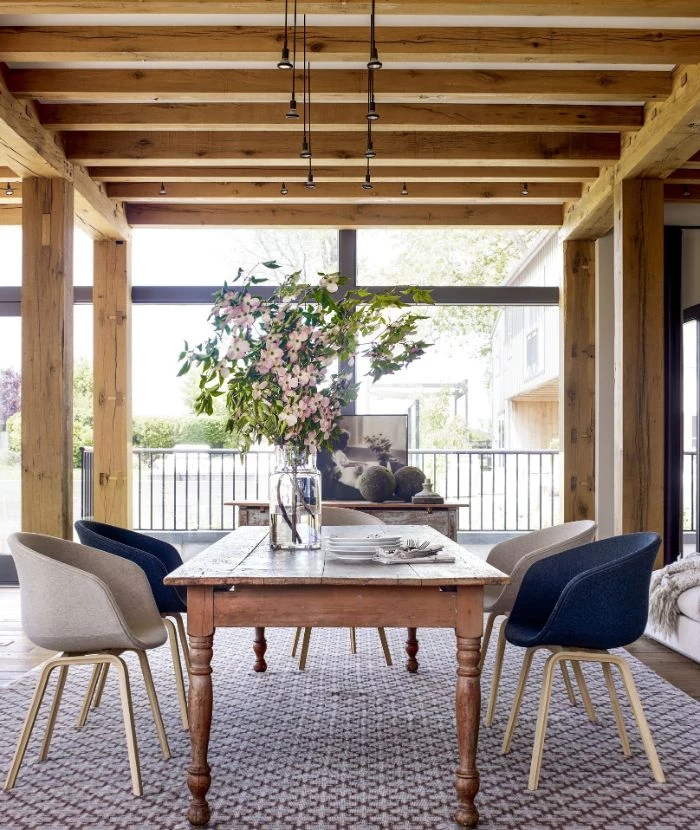
A Few Final Tips (and Crucial Warnings)
The little details bring it all together, but let’s end with the most important stuff: safety and common sense.
When it comes to textiles, think natural: linen tablecloths, cotton napkins, and durable grain sack cushions. For tableware, go for heavy stoneware plates that feel substantial in your hands.
And now for the big stuff. Before you get too excited about that project, here are some common mistakes to avoid:
- Forgetting Spacers for Shiplap: Pushing boards too tight will cause them to buckle when humidity changes. Always use a nickel-sized gap.
- Ignoring Lead Paint: If you buy antique painted furniture, just assume it has lead paint. Use a home test kit before you sand or scrape anything. It’s a serious health hazard.
- Skipping the Wall Anchors: That beautiful hutch is a tipping hazard. Always secure heavy furniture to wall studs.
- DIY-ing Vintage Electrical: Old wiring is a fire risk. Always pay a professional to rewire vintage light fixtures. Your family’s safety is worth it.
Building a real farmhouse dining room is a marathon, not a sprint. It’s about choosing honest materials, respecting solid craftsmanship, and creating a space that’s meant to be truly lived in. Build it to last, and it will serve your family for years to come.
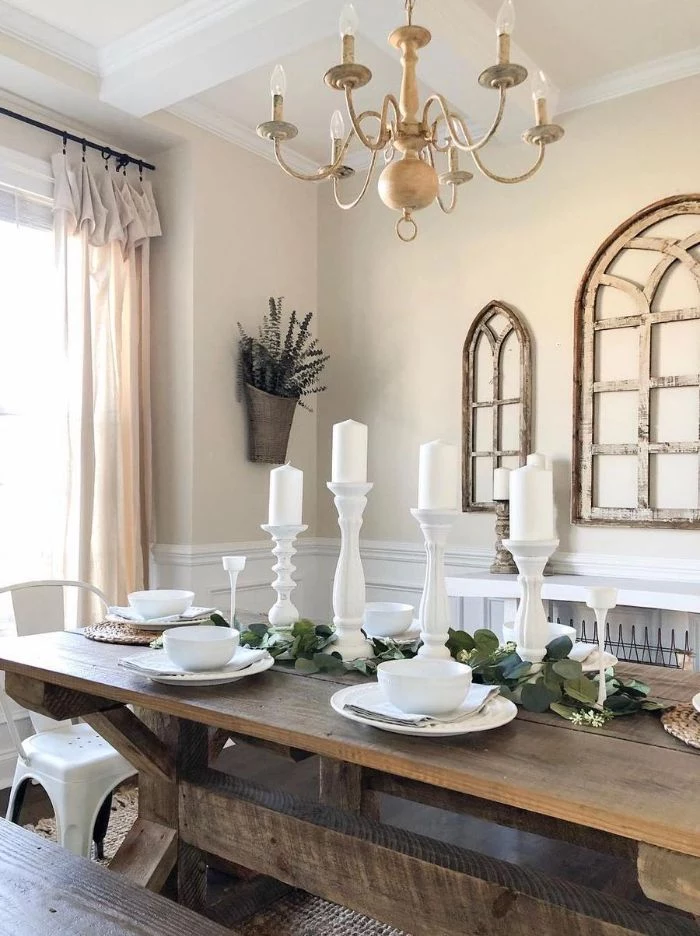
Inspirational Gallery
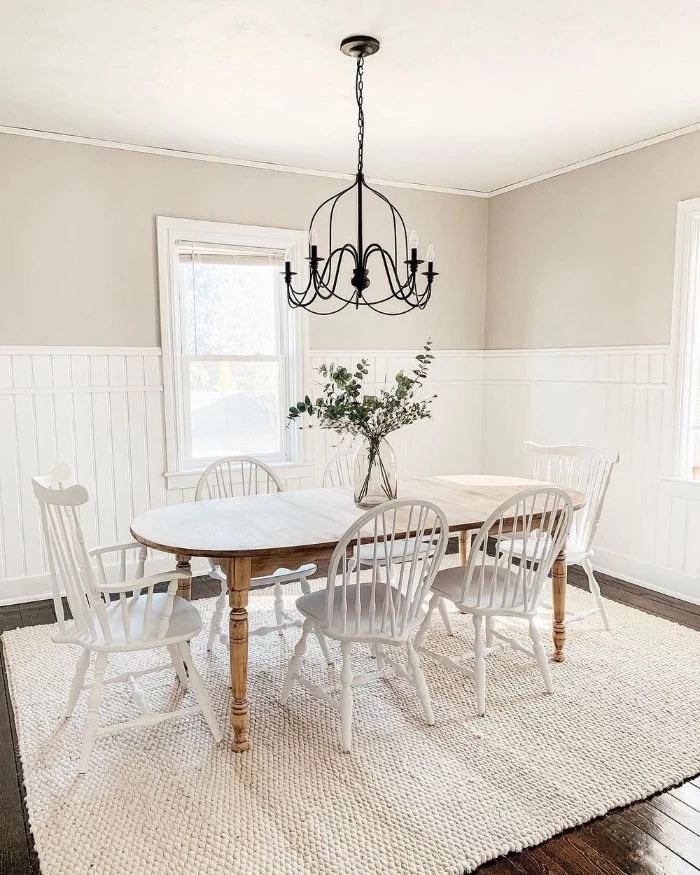
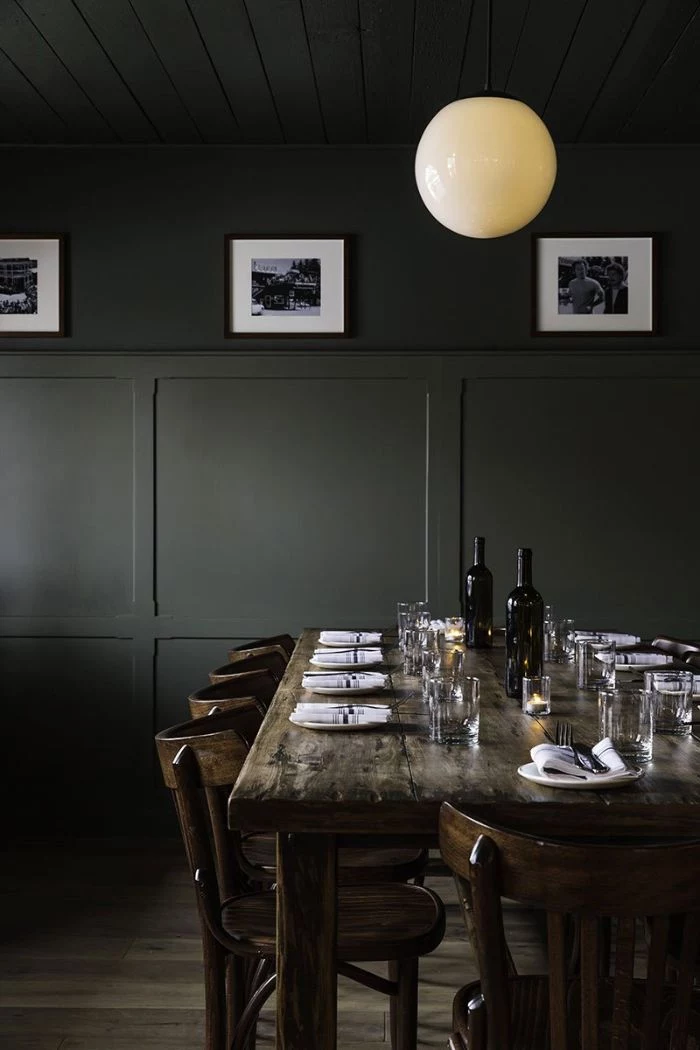
The dining table is the soul of the room. Don’t rush this choice. Look for solid wood—pine, oak, or maple—that can take a beating and tell stories for generations. A table with scratches, dings, and water rings isn’t damaged; it’s alive with the history of family meals, homework sessions, and late-night conversations.
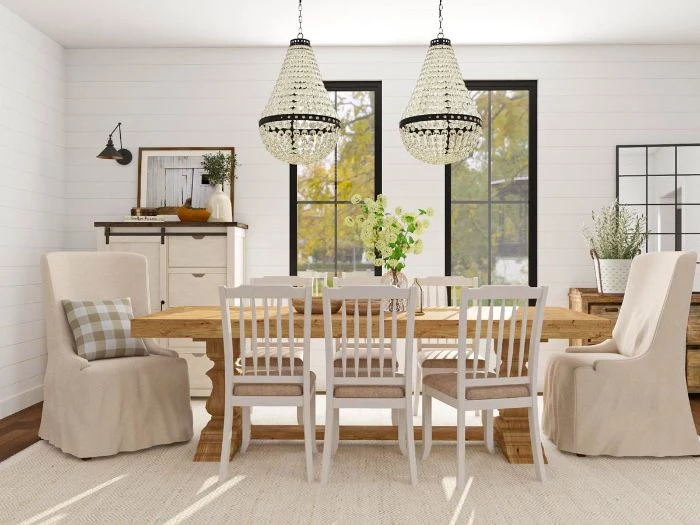
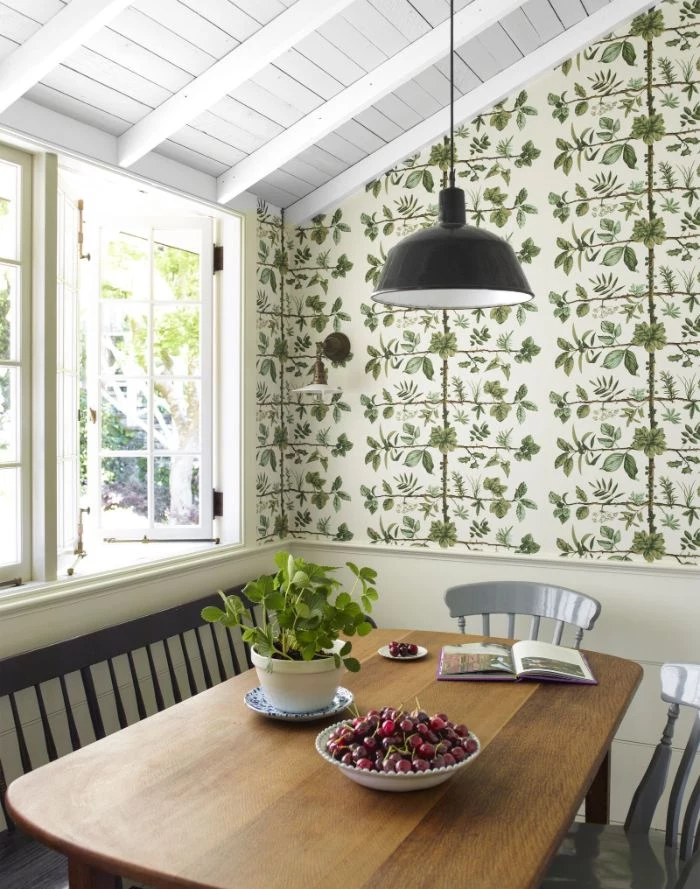
- Unmatched Chairs, United Style: It creates an instant “collected over time” feel.
- Layered, Natural Textures: Think beyond wood. A jute rug, linen napkins, and a wool throw on a bench add depth.
- Functional Decor: Use antique stoneware crocks to hold utensils or a vintage dough bowl for fruit.
The secret to authenticity? Every element should feel like it has a purpose, not just a place.
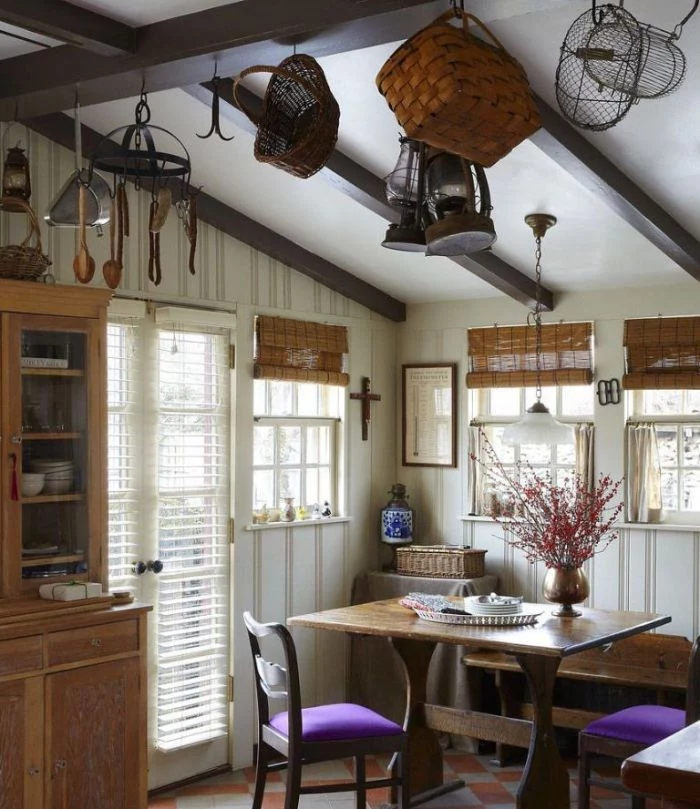
Did you know? The classic Windsor chair, a farmhouse staple, was originally designed in the early 18th century. Its construction, with the legs and back spindles wedged directly into a solid sculpted seat, made it incredibly strong and lightweight—a perfect example of utility driving design.
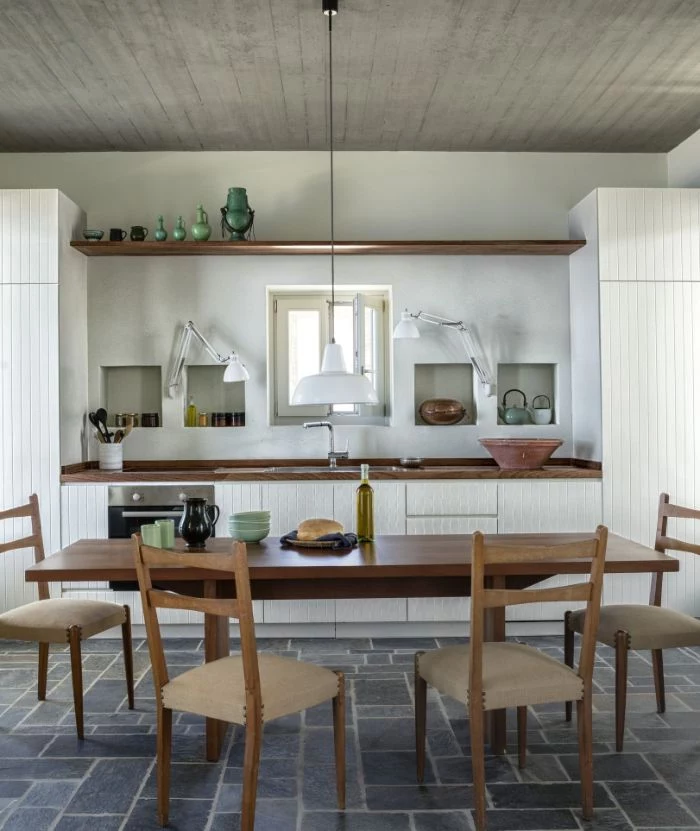
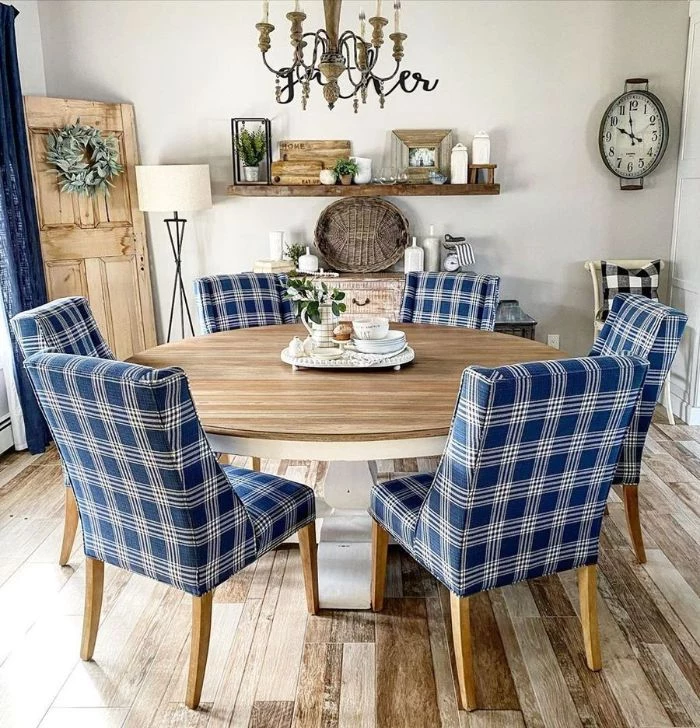
Can a farmhouse dining room feel modern?
Absolutely. The key is in the contrast. Pair a rustic, reclaimed wood table with sleek, minimalist black metal chairs. Or, keep the traditional furniture but paint the walls a deep, moody color like Benjamin Moore’s ‘Hale Navy’ or Farrow & Ball’s ‘Railings’. It’s about honoring the materials while speaking a contemporary language.
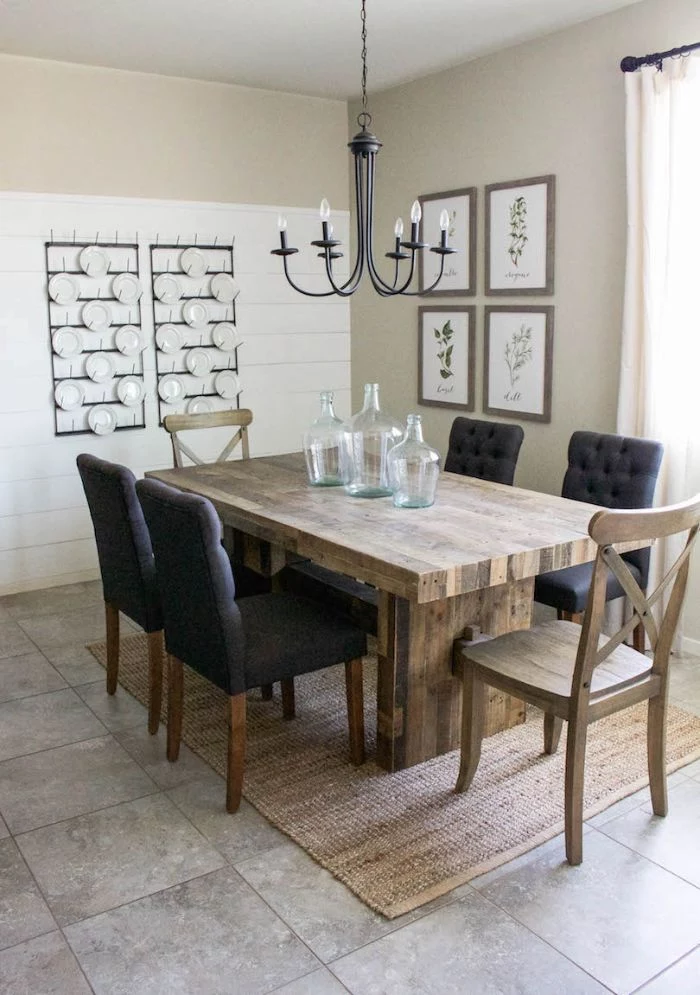
A word on lighting: Your chandelier or pendant light is the room’s jewelry. It sets the mood. Look for simple, strong forms in materials like aged iron, brass, or even wood. A dimmer switch isn’t a luxury; it’s essential for shifting from a bright, functional workspace to a warm, intimate dining atmosphere.
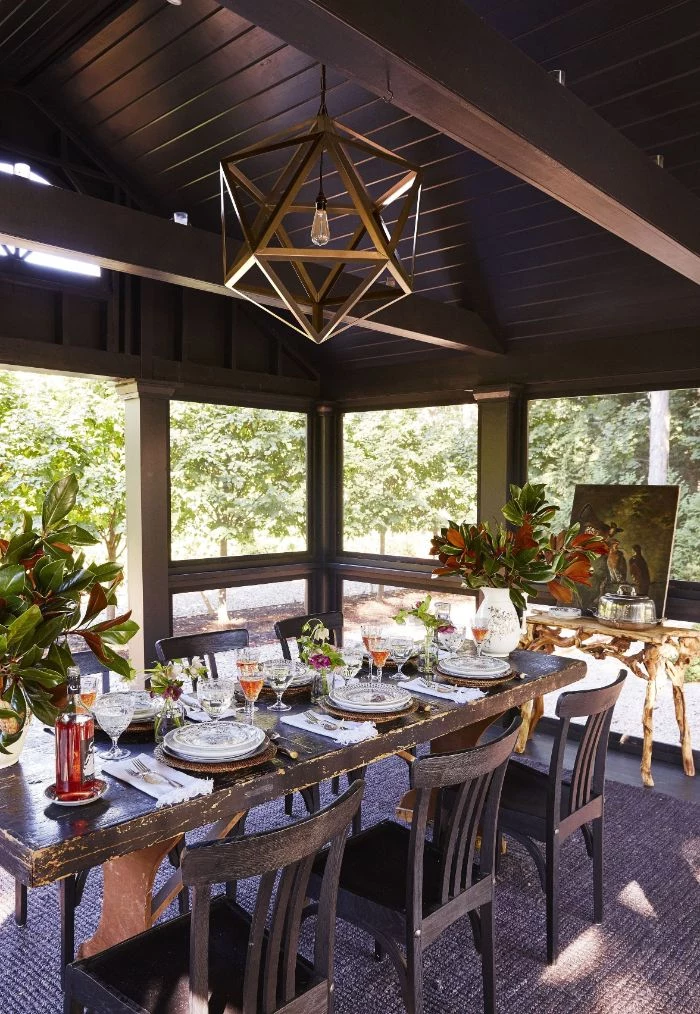
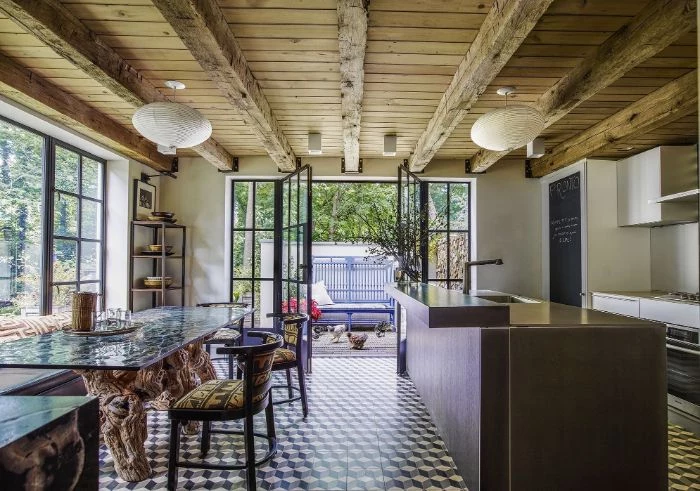
Consider the humble bench. It breaks up the monotony of individual chairs, offers flexible seating, and instantly signals a more casual, communal approach to dining. Slide it under the table when not in use to maximize floor space—a practical trick straight from old farmhouses where space was always at a premium.
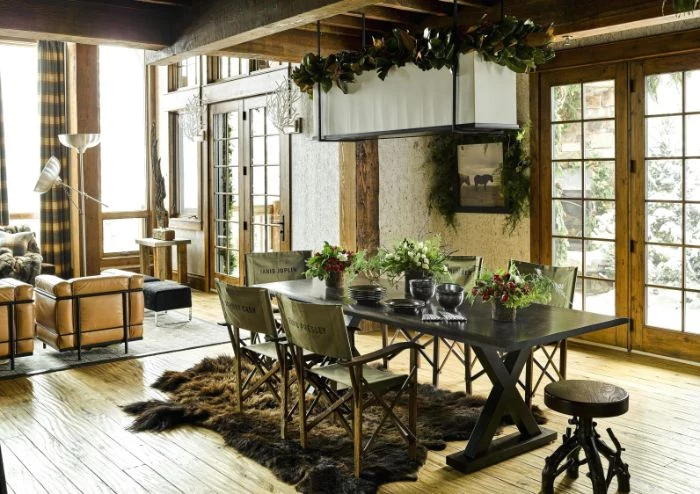
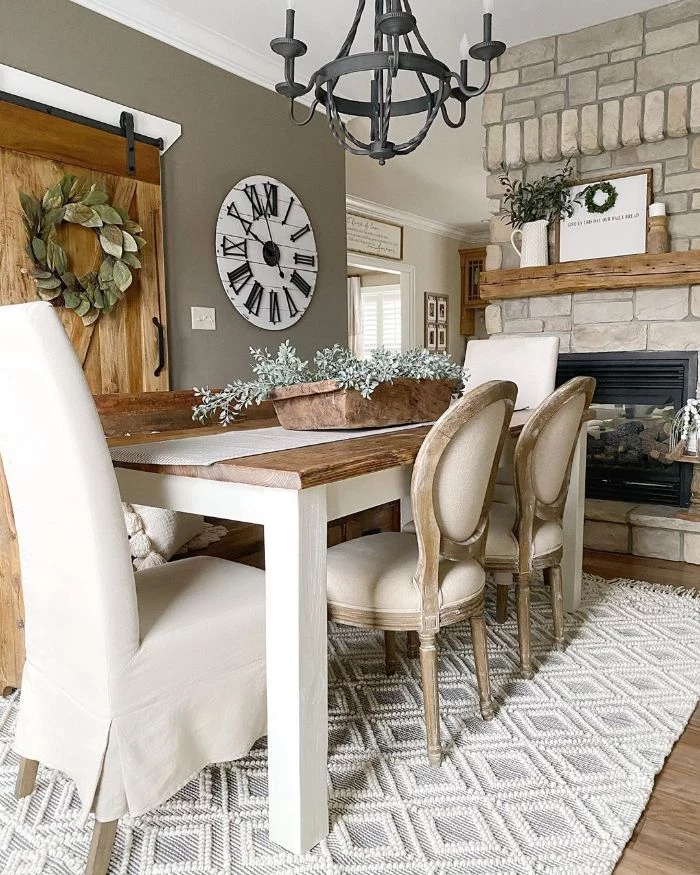
Reclaimed Wood: Sourced from old barns or factories, it has unparalleled character, tight grain from old-growth trees, and is environmentally sound.
New Distressed Wood: Often made from softer, new-growth wood, artificially aged with chains and chemicals. The distressing can look uniform and repetitive.
For true soul, reclaimed is always the superior, albeit more expensive, choice.
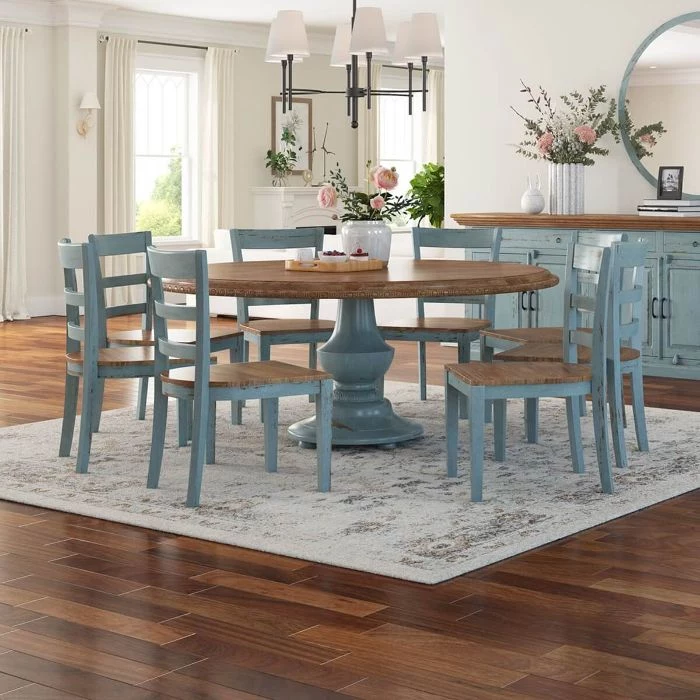
- Check for stability. Give it a good shake—a wobbly table is a project you might not want.
- Inspect the joinery. Are the legs securely attached? Dovetail joints are a sign of quality craftsmanship.
- Ignore the surface finish. Scratches and stains can be sanded and refinished, but structural integrity is what matters most.
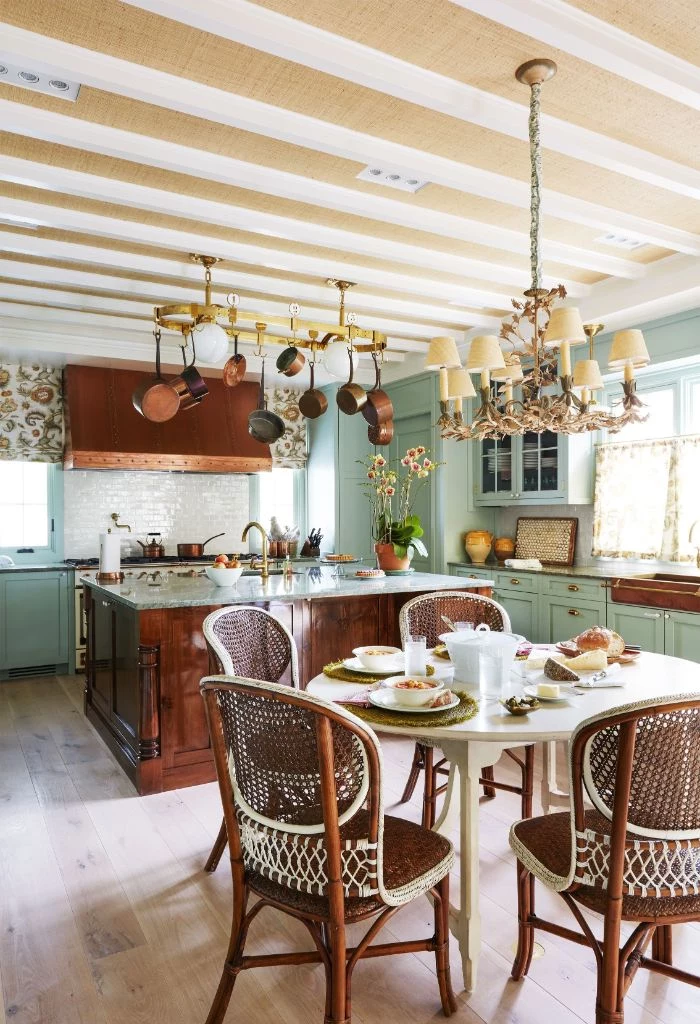
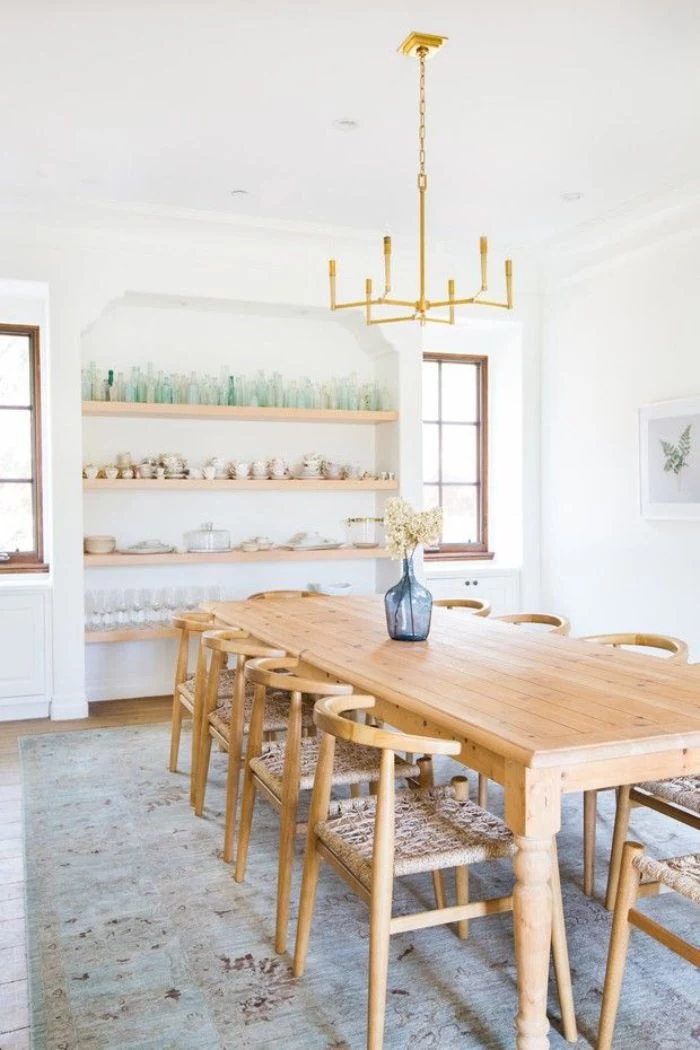
A study from the Forest Products Laboratory found that producing goods from reclaimed wood can use up to 13 times less energy than using virgin wood. Choosing a vintage table isn’t just a style choice; it’s a sustainable one.
This means your dining room’s centerpiece can have a backstory that’s as rich environmentally as it is historically. When you choose reclaimed, you’re not just buying a table; you’re preserving a piece of forest and a piece of the past.
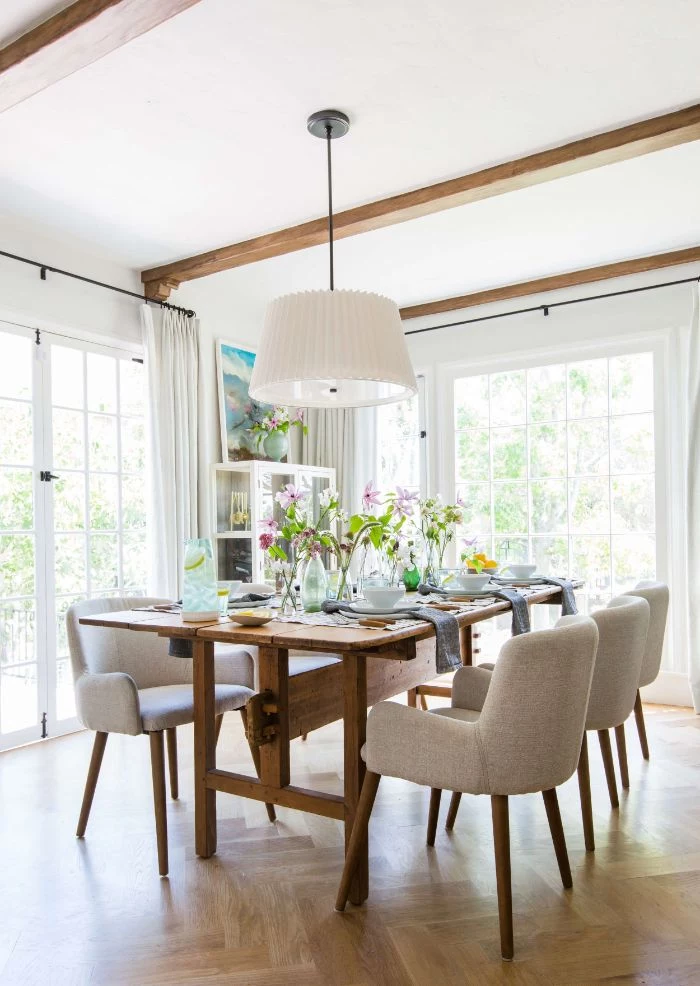
Shiplap isn’t the only authentic wall treatment. Consider beadboard wainscoting for a touch of classic cottage charm. Installed on the lower third of the wall, it protects against chair scuffs—a truly functional detail. For a more primitive feel, a skim coat of plaster with a slightly uneven, hand-troweled finish adds texture and warmth that drywall simply can’t replicate.
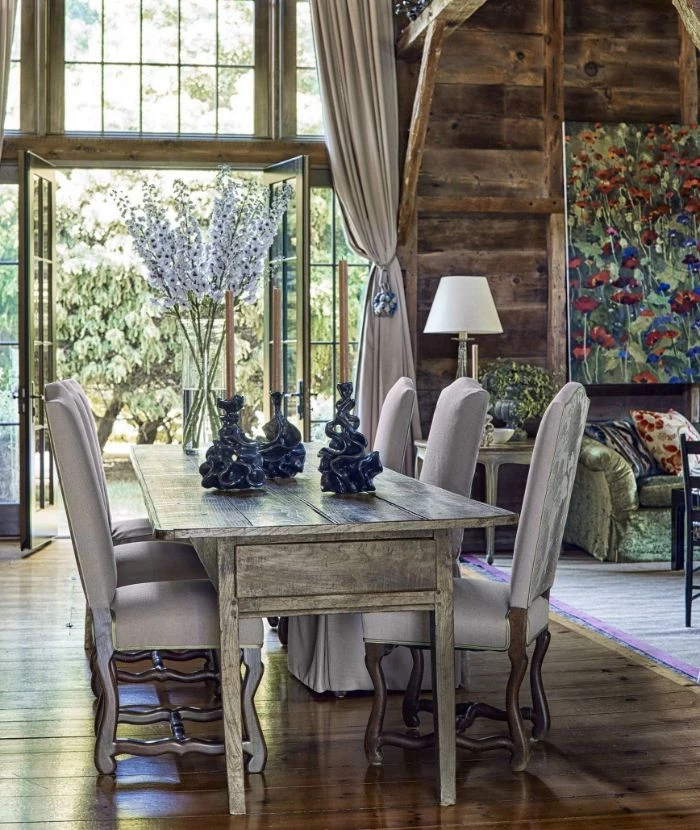
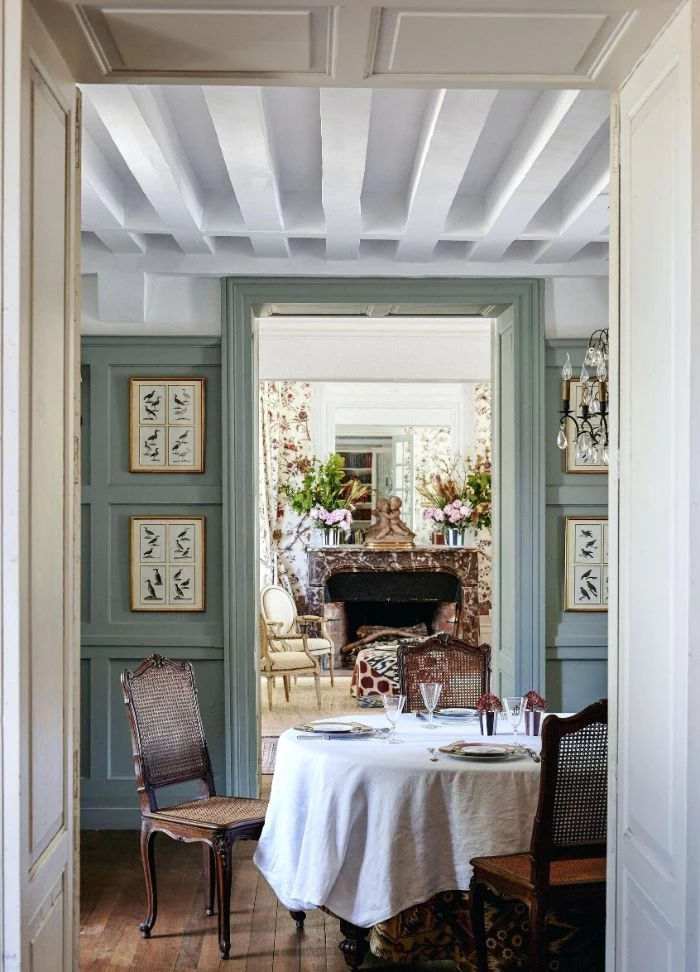
Don’t be afraid of color: While white is classic, authentic farmhouse interiors often used muted, natural colors. Think of the dusty sage green of a garden herb, the buttery yellow of fresh cream, or the soft blue of a robin’s egg. Paint brands like Old Fashioned Milk Paint Co. offer historically accurate palettes that feel both timeless and fresh.
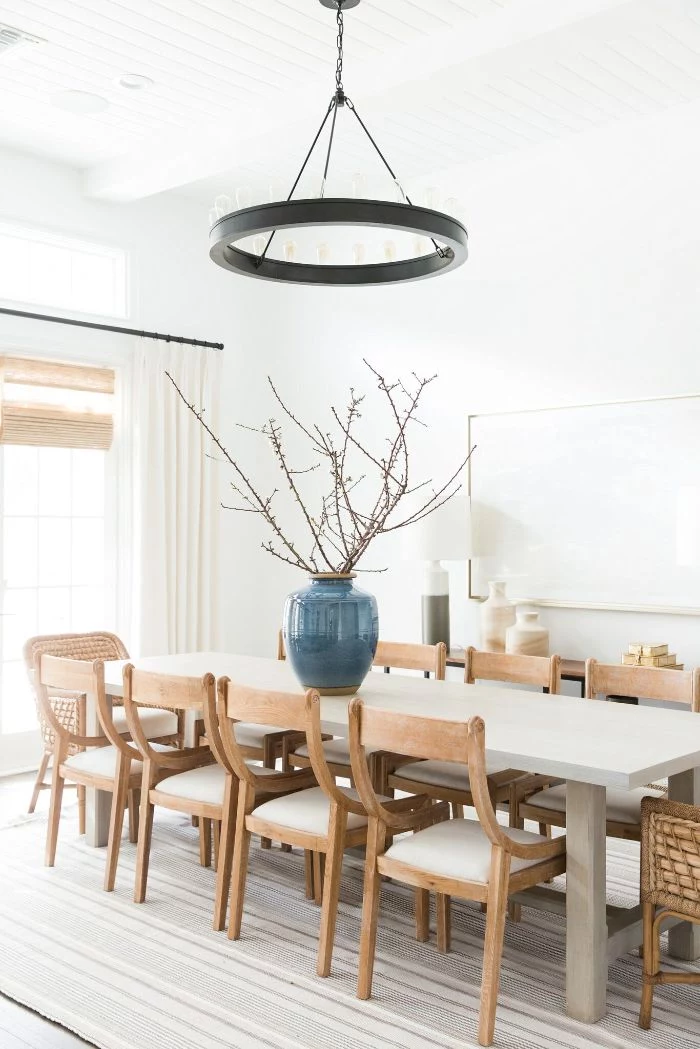
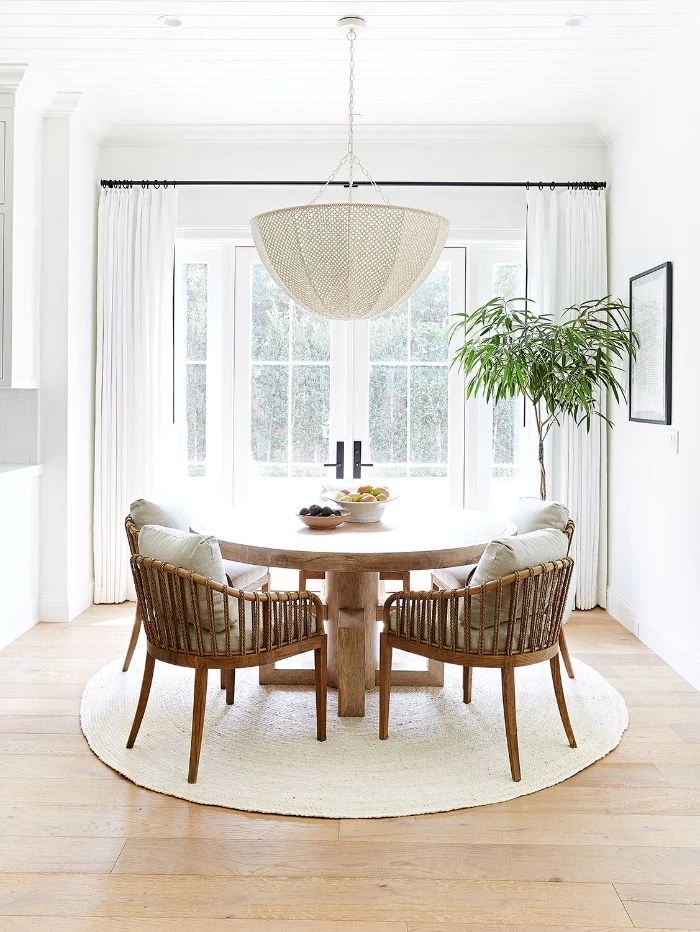
When choosing a rug, think durability and texture. A flat-woven wool or a natural jute rug defines the dining space and adds a layer of comfort. Crucially, ensure it’s large enough. All chair legs should remain on the rug, even when pulled out from the table. This prevents snagging and creates a more generous, grounded feel.
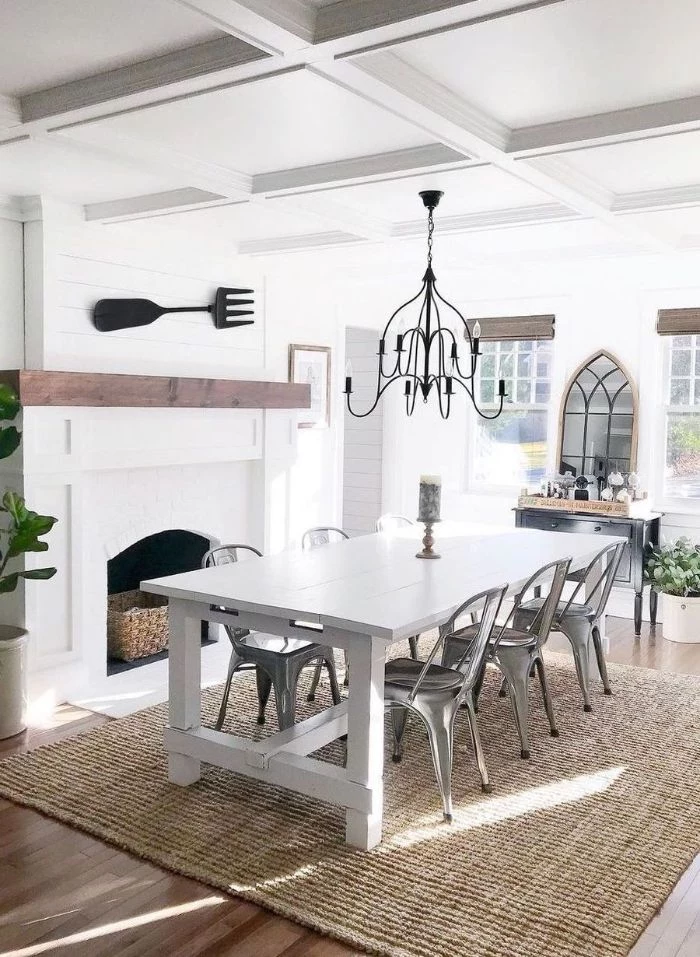
- Iron: For hardware, lighting, and chair frames. Its dark, matte finish provides a rustic, industrial anchor.
- Brass: Unlacquered brass on cabinet pulls or a chandelier adds a touch of warmth that will patina beautifully over time.
- Copper: A gleaming copper pot on an open shelf or a copper-toned light fixture introduces a warm, rosy glow.
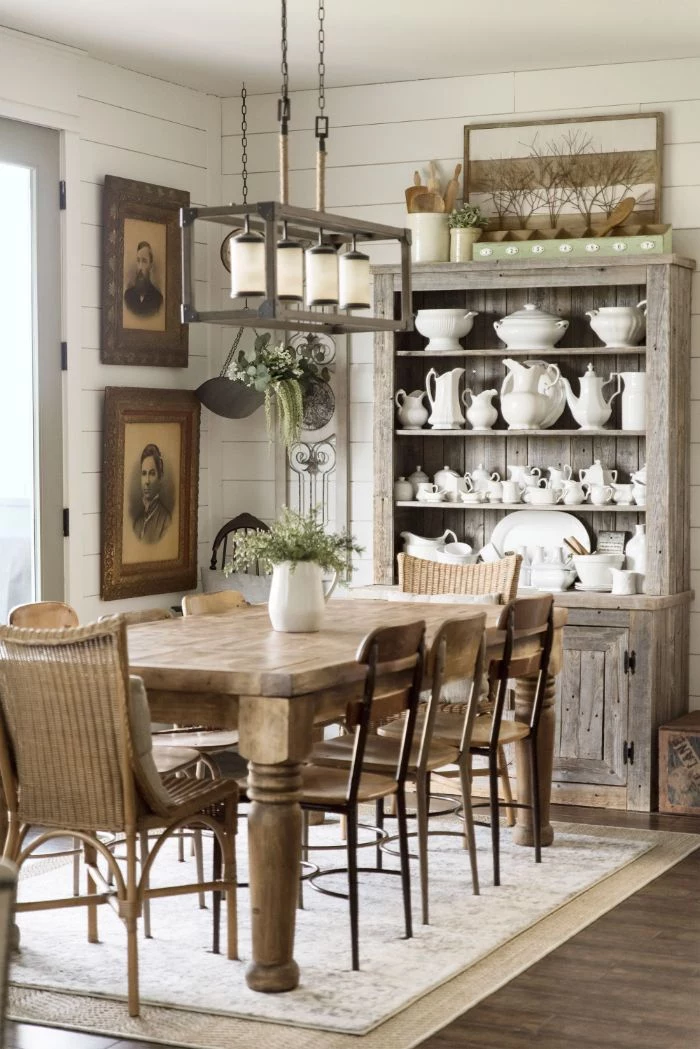
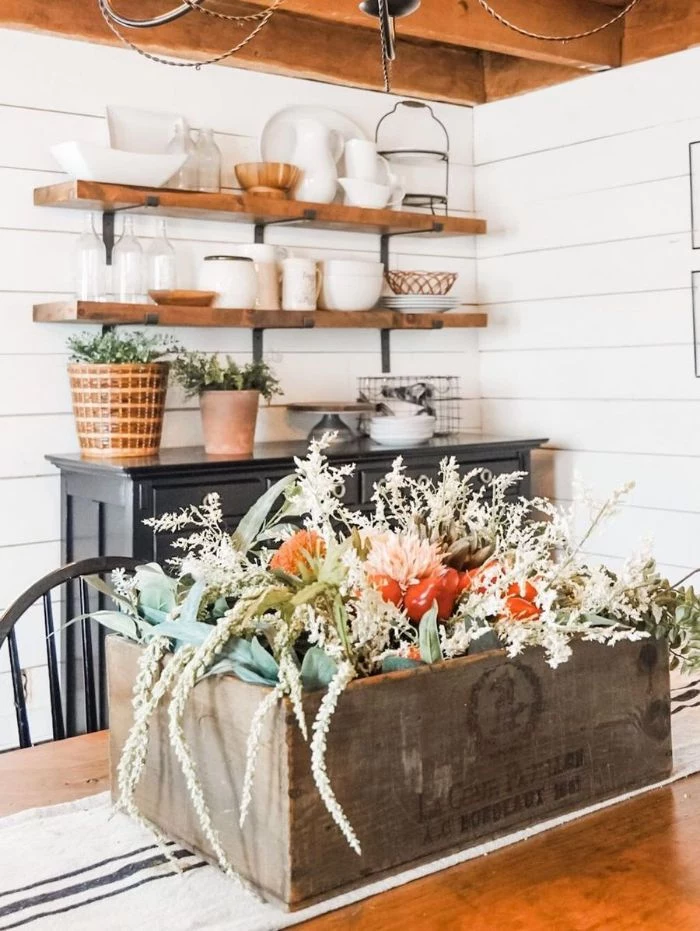
What about the flooring underfoot?
Wide-plank pine is the classic choice, but not the only one. Consider natural slate or terracotta tiles for incredible durability and a connection to the earth. They are cool in the summer, work well with radiant heating in the winter, and their imperfections only add to their beauty over the years. They provide a wonderful, hard-wearing contrast to the wood furniture.
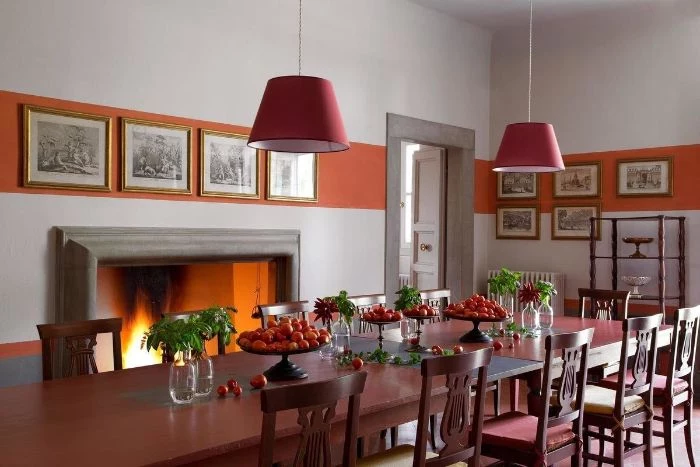
The Mistake: A “Farmhouse” Sign. Nothing screams “inauthentic” more than a store-bought sign that says ‘Gather’ or ‘Farmhouse’.
The Fix: Genuine Art. Hang a simple landscape painting, a series of black-and-white family photos, or even frame a beautiful old recipe from a grandparent. Let your walls tell your story, not a retail trend.
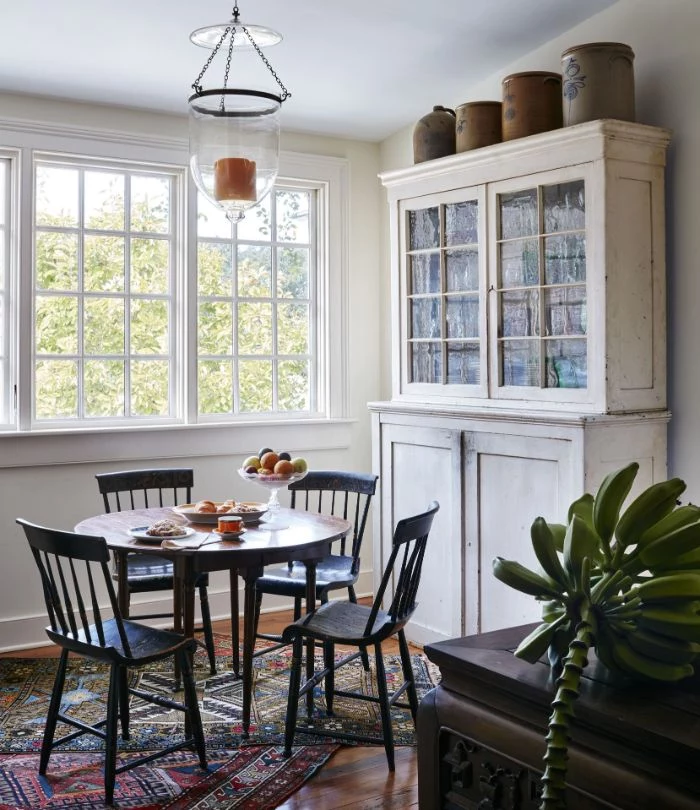
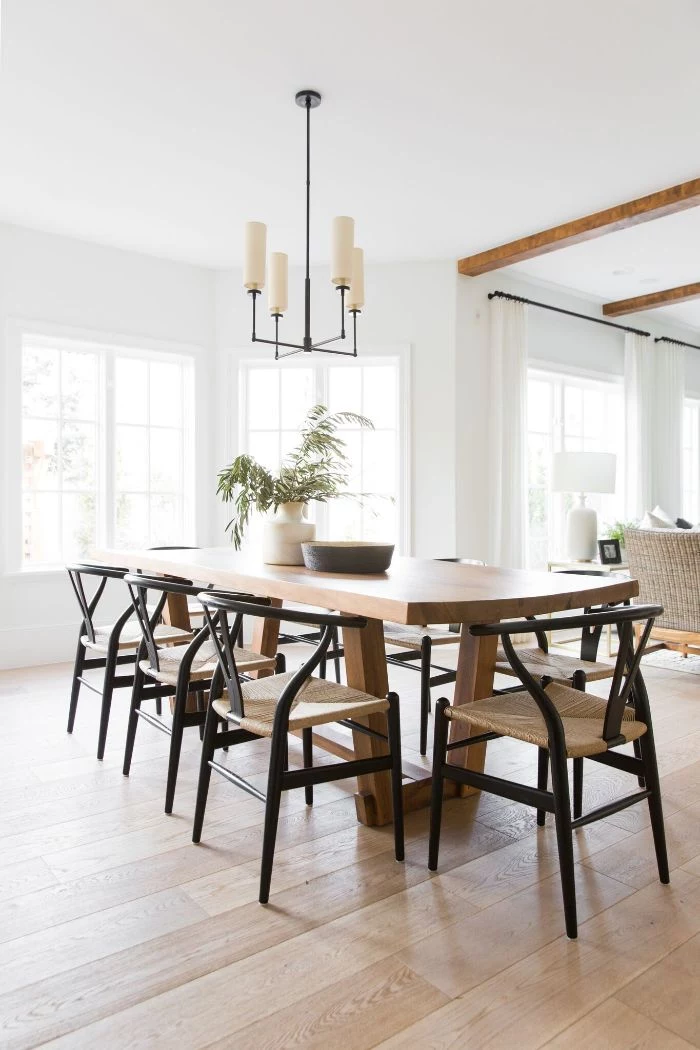
“Have nothing in your house that you do not know to be useful, or believe to be beautiful.” — William Morris
This quote is the very essence of the authentic farmhouse ethos. Before adding any object to your dining room, ask yourself if it serves a purpose or brings you genuine joy. If the answer is no, leave it on the shelf.
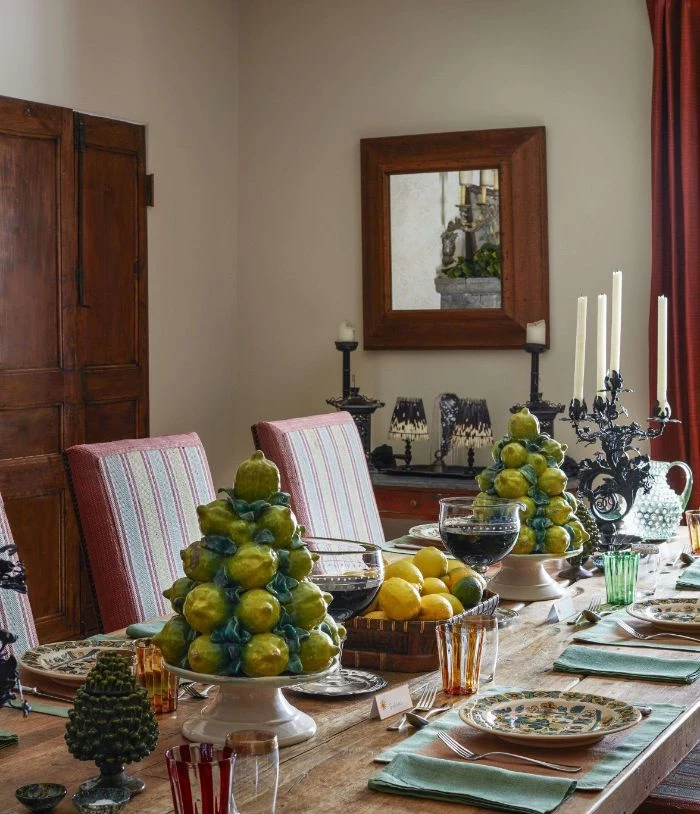

Milk Paint: A traditional, water-based paint made from milk protein. It soaks into raw wood, creating a mottled, authentically aged look that flakes and chips naturally over time. Perfect for a truly vintage finish.
Chalk Paint: A modern invention, known for its thick consistency and ability to adhere to almost any surface without priming. It creates a soft, matte, and more uniform finish that is typically distressed by sanding.
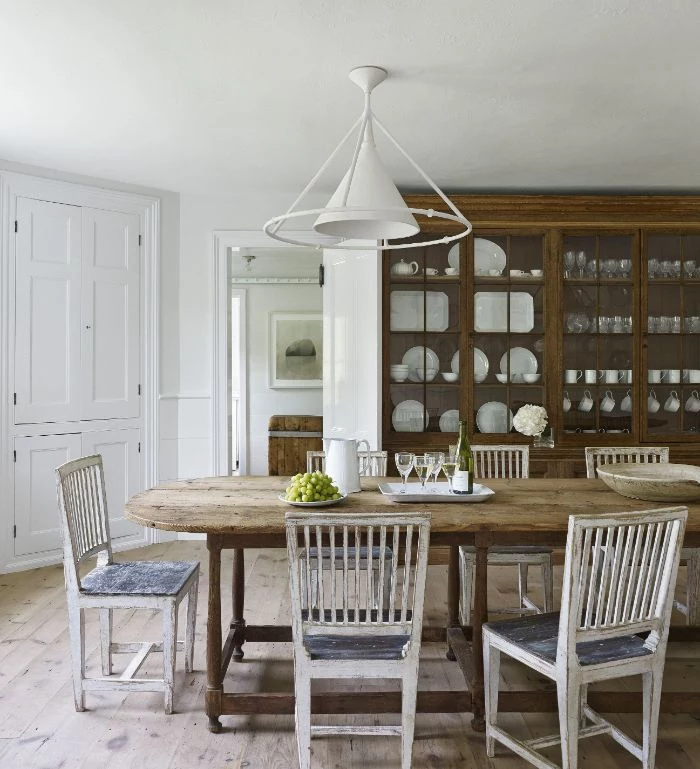
Let the seasons decorate for you. Instead of a permanent centerpiece, use a vintage ceramic pitcher or a simple glass jar. In spring, fill it with lilac branches. In summer, Queen Anne’s lace. In autumn, fiery maple leaves. In winter, stark, beautiful bare branches. It’s a simple, no-cost way to keep the room feeling connected to the world outside.
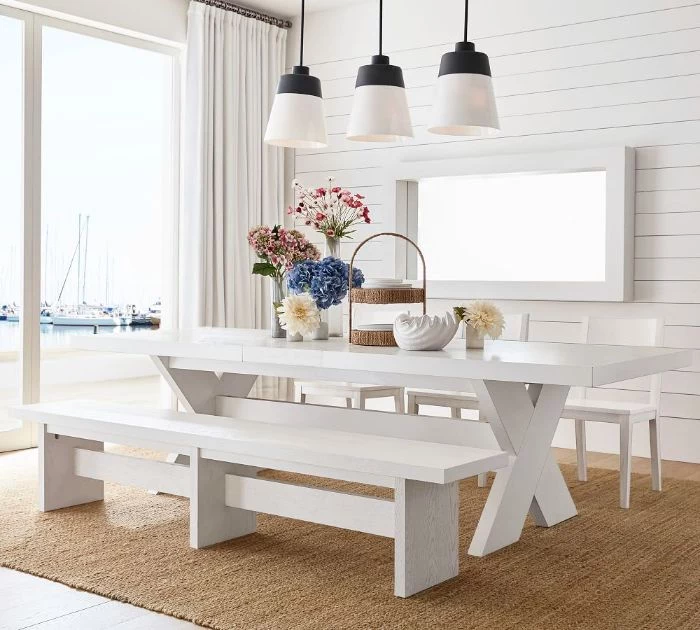
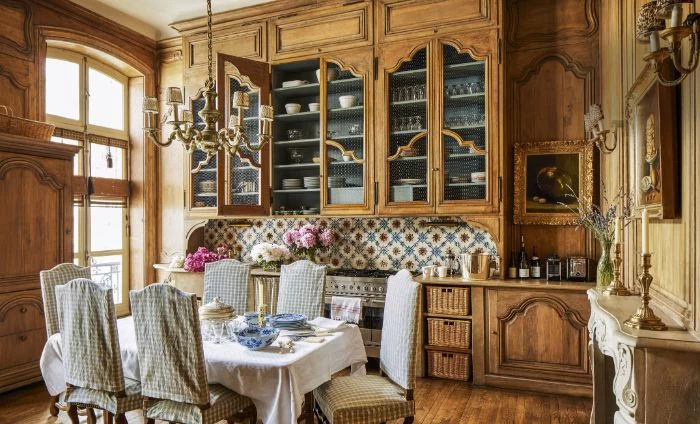
Important point: Avoid the matching set. A true farmhouse dining room looks like it was assembled over years. Pair a heavy oak table with delicate spindle-back chairs. Or, find a set of six matching chairs and paint two of them a different, complementary color. This intentional imperfection is the key to character.
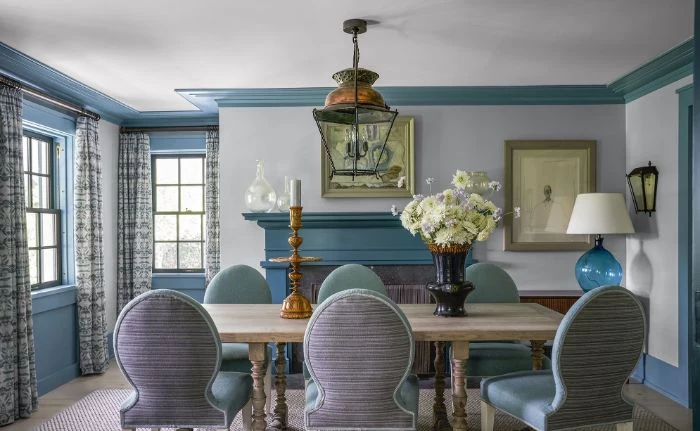
- It adds visual weight and anchors the room.
- It provides invaluable, easy-access storage.
- It’s a perfect display space for your favorite dishes or glassware.
The secret? A freestanding hutch or cupboard. It feels more like a piece of furniture than built-in cabinetry, reinforcing the idea of a room that has evolved over time.
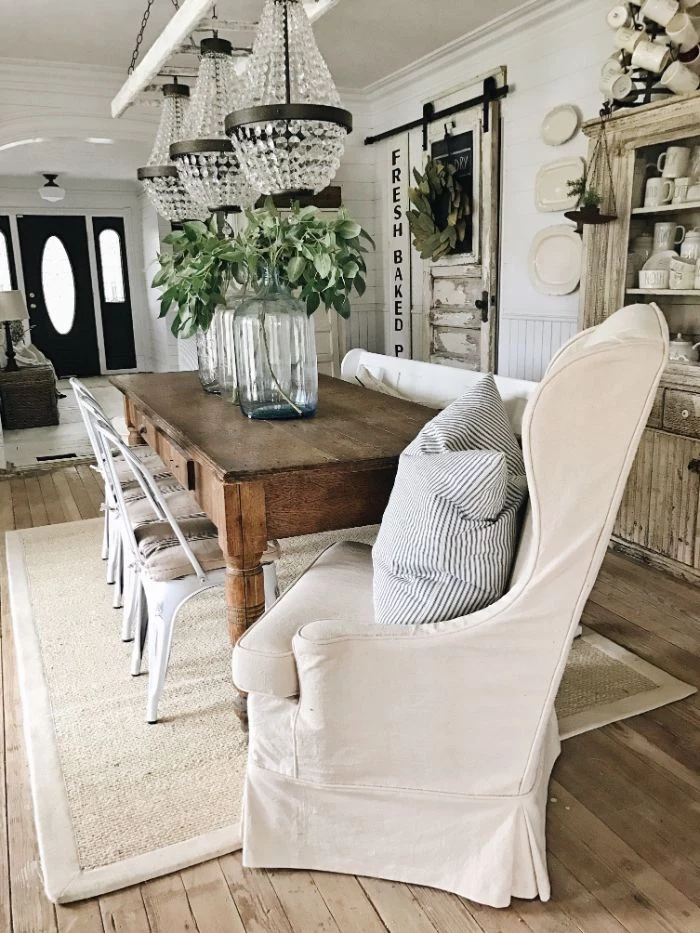
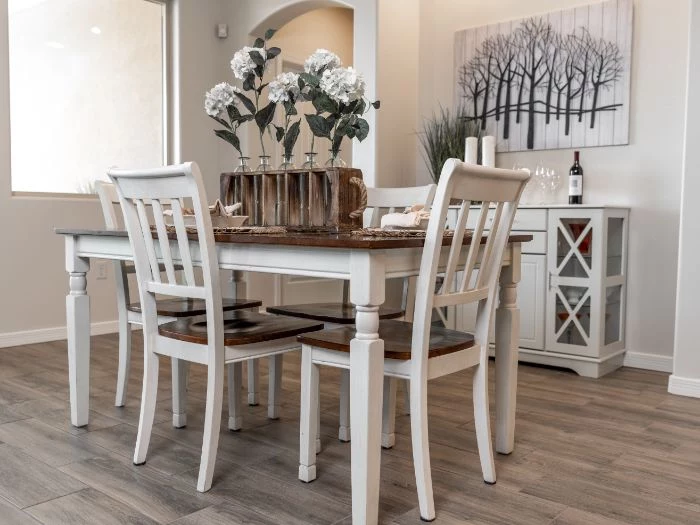
Want to age new wood for a small project, like a shelf or picture frame? Brew some strong black tea and brush it onto the raw wood. Let it dry completely. Then, brush on a solution of white vinegar that has had a piece of steel wool soaking in it for a day. The iron acetate reacts with the tannins from the tea, instantly creating a beautiful, silvery-grey aged patina.
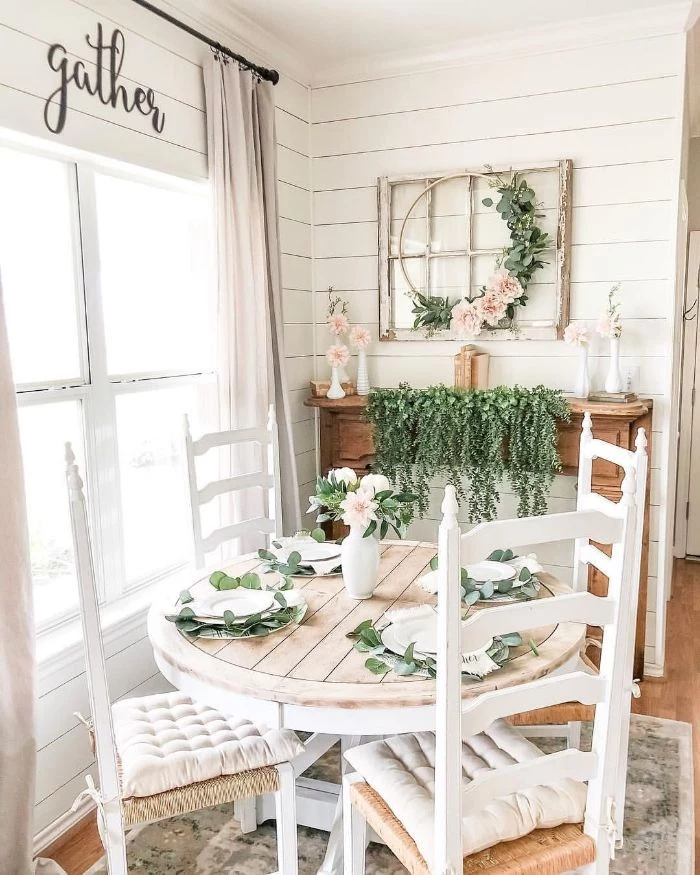
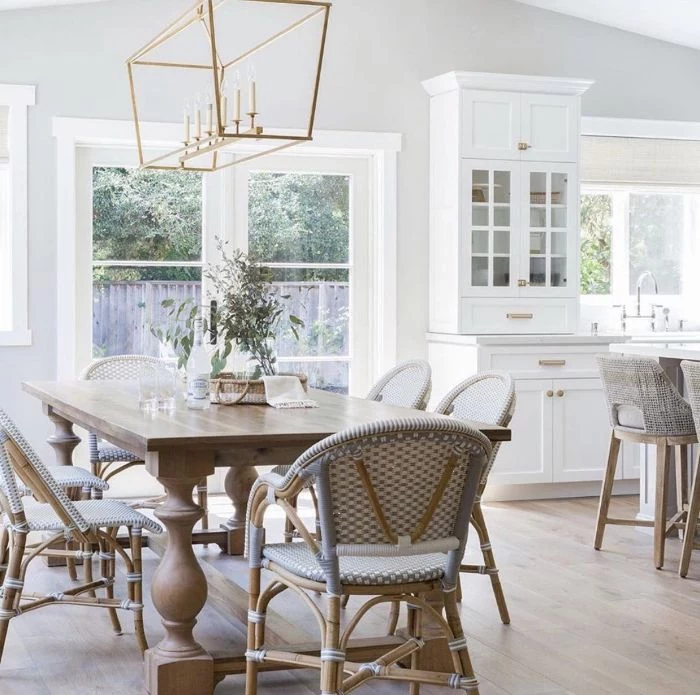
How do I care for a solid wood table?
Forget fussy polishes. For a natural, food-safe finish, use a mixture of mineral oil and beeswax, like the conditioner used for butcher blocks. Brands like Howard’s offer excellent options. Apply a thin coat, let it soak in for 20 minutes, then buff it off with a clean, dry cloth. Do this a few times a year to keep the wood from drying out and to enhance its natural luster.
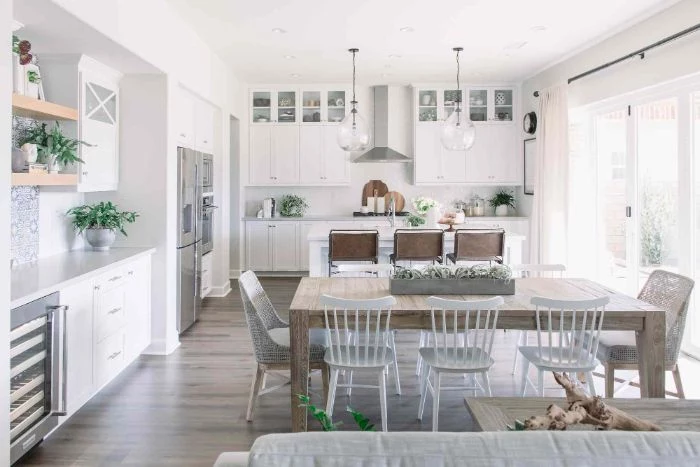
The trestle table, common in monasteries and castles for centuries before it reached the farm, was designed for strength and portability. The top could be removed from the two trestle legs, allowing a great hall to be cleared for other activities. Its history is rooted in communal living and adaptability.
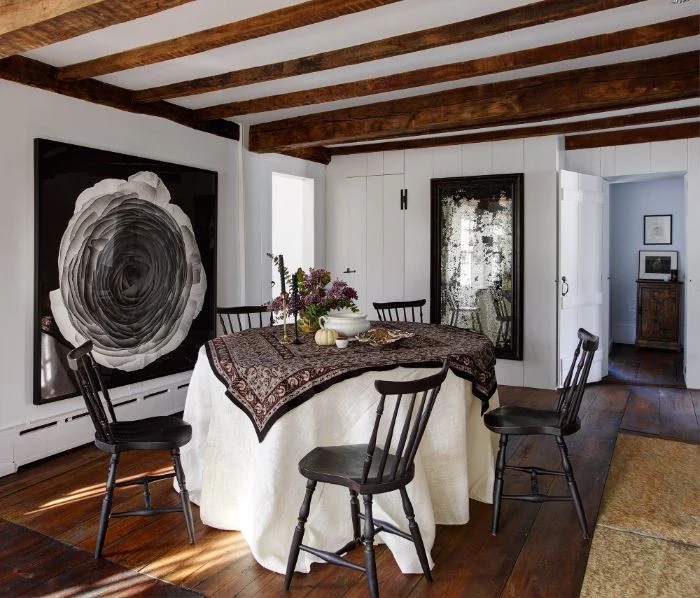
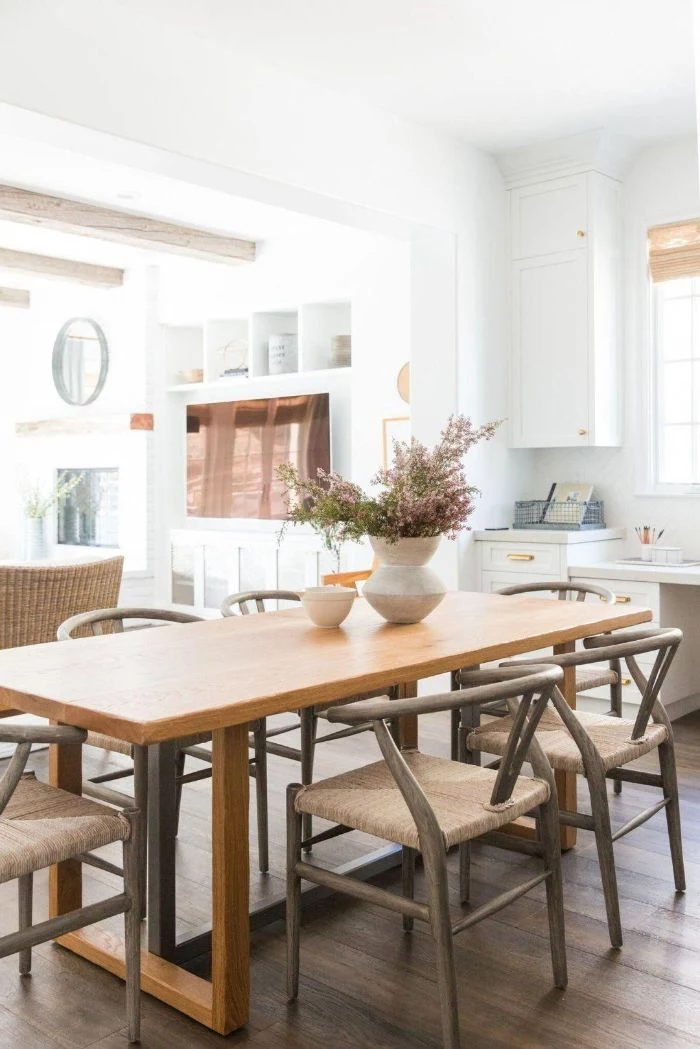
Open shelving, a popular trend, has deep roots in the farmhouse kitchen and dining area. It wasn’t about aesthetics; it was about efficiency. Having everyday plates, bowls, and glasses within easy reach saved time and effort. When you adopt this feature, embrace its utilitarian spirit by storing the items you actually use daily.
A final thought on textiles: The texture of a nubby linen tablecloth or the simple weave of a cotton dish towel used as a napkin can be just as important as the grain of the wood. These tactile details add a layer of softness and humanity to the hard surfaces, making the space feel truly welcoming and comfortable.










